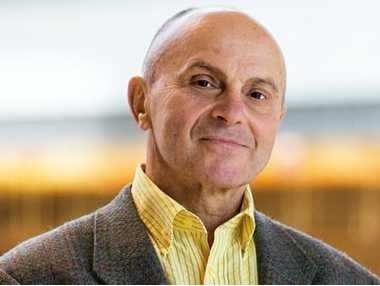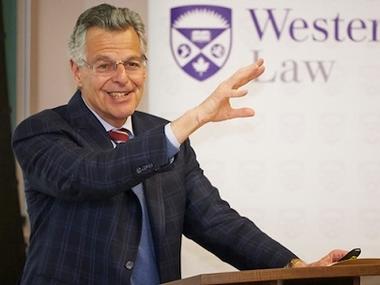Academic Influences
Click on a name to go right to an overview of the professional:
 Eugene Fama
Eugene Fama
Nobel Prize Winner and University of Chicago, Robert R. McCormick Distinguished Service Professor of Finance Professor. He is credited with founding both the random walk hypothesis and the efficient market hypothesis. He has published numerous articles and worked in collaboration with Kenneth French to define the Three-factor Model. Considered a giant in the field of financial economics, he is among the world's most cited academics.
Research activities focus on theoretical and empirical work on investments; price formation in capital markets; corporate finance, and the economics of the survival of organizational forms. Dr. Fama also serves as Director of Research at Dimensional Fund Advisor
 Harry Markowitz
Harry Markowitz
Nobel Prize Winner, 1990. As a graduate student in economics at the University of Chicago, Dr. Markowitz first studied portfolio design and risk reduction in his paper, "Portfolio Selection, " published in the 1952 Journal of Finance.
Thirty-eight years later, he shared the Nobel Prize in Economic Sciences with Merton Miller and William Sharpe for developing the theory of portfolio choice, one of the primary concepts crucial to the development of Modern Portfolio Theory.
 William Sharpe
William Sharpe
STANCO 25 Professor of Finance, Emeritus at Stanford University's Graduate School of Business. Sharpe was one of the originators of the capital asset pricing model (the device that gave Wall Street the concept of the "beta"), developed the Sharpe Ratio for investment performance analysis, the binomial method for the valuation of options,
The gradient method for asset allocation optimizations, and returns-based style analysis for evaluating the style and performance of investment funds. He has written six books and received the Nobel Prize in Economic Sciences in 1990.
 Merton Miller
Merton Miller
(1923-2000). Nobel Prize Laureate, 1990. Miller's illustrious academic career started at Harvard, where he graduated in 1943. He worked at the U.S. Treasury and Federal Reserve, then earned his Ph.D. from Johns Hopkins University in 1952. He taught at Carnegie Tech, where he met Franco Modigliani (Nobel Prize winner 1985) and together they made economic history with the"M&M Theorem."
Miller's work on the effect of firms' capital structure and dividend policy on market price along with the work of Markowitz and Sharpe contributed to Modern Portfolio Theory, and earned him the Nobel Prize in Economic Sciences in 1990.
 Myron Scholes
Myron Scholes
Stanford University, Frank E. Buck Professor of Finance at the Graduate School of Business and Senior Research Fellow at the Hoover Institution. Scholes earned his Ph.D.in 1969 from the University of Chicago, and became heavily involved with the Center for Research in Security Prices (CRSP).
He has written and published many articles on his own and in collaboration with other highly regarded academics, including Merton Miller, Fischer Black, and the man who shared his 1997 Nobel Prize in the Economic Sciences, Robert C. Merton. Merton and Scholes were recognized for their work on the derivative pricing formula.
Scholes also holds honorary doctorate degrees from three universities: University of Paris-Dauphine, McMaster University, and Katholieke Univesiteit Leuven.
 Kenneth French
Kenneth French
Kenneth R. French is the NTU Professor of Finance at MIT's Sloan School of Management. He is an expert on the behavior of security prices and investment strategies. His recent research focuses on tests of asset pricing models, the trade-off between risk and return in domestic and international financial markets, the cost of capital, and the relation between capital structure and firm value.
French is a Research Associate at the National Bureau of Economic Research, an Advisory Editor of the Journal of Financial Economics, an Associate Editor of the Review of Financial Studies, and a past director of the American Finance Association.
He has co-authored numerous papers and articles with Eugene Fama. In 1990, they sought to determine what sources of risk the market systematically rewards with higher returns. The result of their research is known as the Three-factor Model. He is also a key advisor for Dimensional Fund Advisors.
